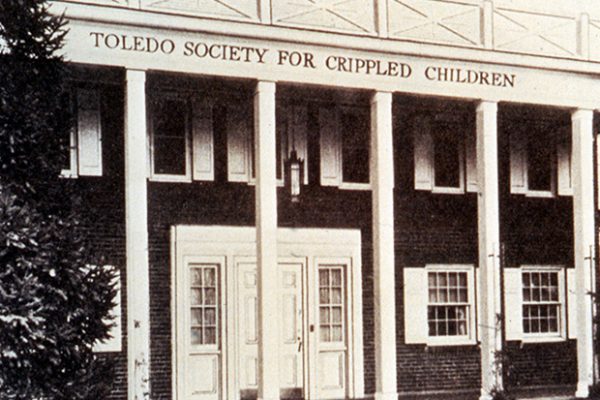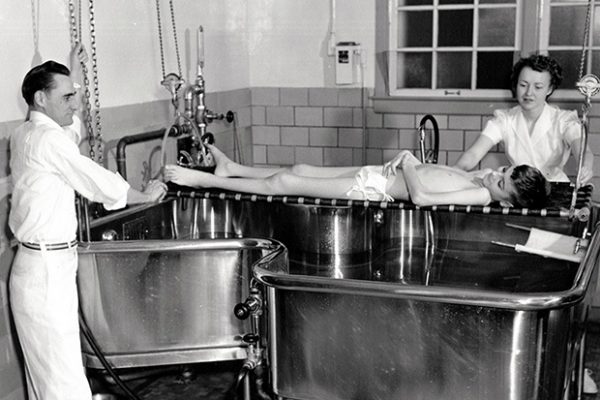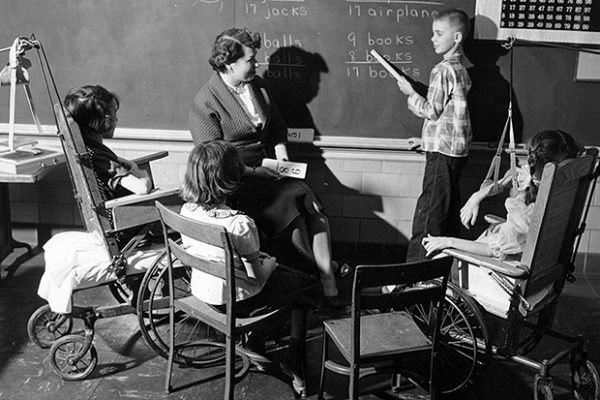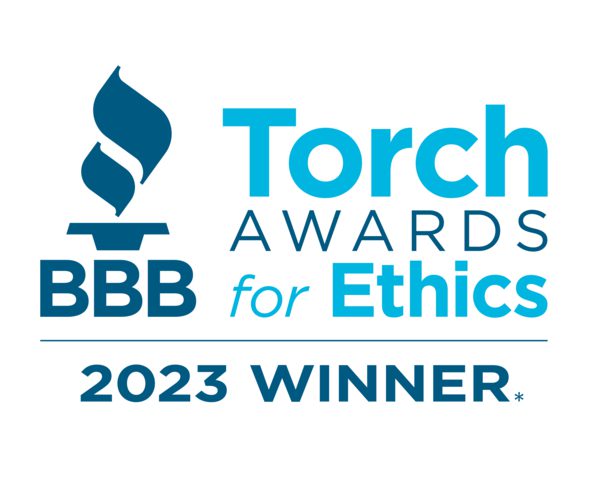

100 Years of Service
One hundred years ago on December 10, a small group of thoughtful and committed citizens – men whose motto was “Service Above Self” – gathered in a room to put pen to paper and give wings to a dream. With their wisdom and guidance, the dream flourished. In the face of epidemics and a Great Depression, medical innovation, and social change, the dream evolved and flew further than they could have imagined.
We are that dream, and we’ve just turned 100!
Three years ago, when we began in earnest to plan for our centennial year – with all its promise for celebration – like so many others planning such things, little did we know what was to come. Collaborating with community partners, we had plans for film festivals and a raised-bed garden, concerts and a gala event, as well as a number of smaller events over the year.
Instead, we did over 2,000 wellness calls; collected, assembled, boxed up and delivered two rounds of COVID care packages, each time dropping off over 100 boxes of products important to the people we serve. Like every other organization, we mastered Zoom and evolved to use it daily. Still do – for pretty much everything. During the lockdown, we slowed, but only to check on each other, get our bearings, assess our situation and that of the disabled community, adapt to the new reality, and work out a plan for operating as close to normal as circumstances would allow.
In some cases, we were creating best practices by necessity, incorporating COVID protocol and procedures into what we already did well. We started holding weekly webinars to address issues pertinent to people with disabilities, our sister organizations who serve them, and our community partners in this time of pandemic.
Our Assistance Dog program continued to raise, train and place service and therapy dogs throughout 2020, the only such provider across America to do so. Since the beginning of March, our Home Accessibility department completed 139 projects – installing ramps, steps, handrails, grab bars – making life safer and easier for citizens already grappling with a virus that doesn’t care about access issues.
As soon as universities reopened, we began to speak with 4th-year and masters level nursing students again, educating them on how best to treat and help heal patients with disabilities from an Independent Living philosophy, but with a new resolve and understanding that hard choices were being made in COVID situations based on old assumptions and quality-of-life misperceptions about living with a disability, making the talks that much more vital.
As the staff member charged these past few years with researching, digitizing and cataloging our 100-year history, I can say without hesitation this type of success in the face of a pandemic both humbles and inspires me, but it does not surprise me. Apparently, it is something built into our organizational DNA. We were conceived during the polio epidemic of 1915-16, developed over the breadth of the 1918 Spanish flu pandemic, and born during the 1920-21 polio epidemic. Over the course of the first thirty years of our existence, our primary reason for being was to be the place in northwest Ohio to care for children and adults dealing with polio. We were there – doing our job through every epidemic – until the Salk vaccine gave us reason to evolve. Over that span, along with other childhood diseases and disabilities, we treated the vast majority of the 1,167 polio cases recorded in this area.
Before this March, you would be hard pressed to find anyone under 70 here in the states who knew or remembered what it was like to fear a silent pathogen – a disease that came in the warmer months to attack seemingly random lives – young and old – but mostly young. Before this March, it would have been difficult to fathom the existential angst associated with the uncertainty of everything and everyone. But now we know. We now have an inkling of what it was like for our communities in early half of the last century – in the time of polio.
Sure, there have been others – most recently Ebola – but, thanks to the CDC and the brave physicians, nurses and scientists who took the fight to the disease, it never really affected us, never came to our shores to any degree, never became the existential threat COVID-19 has become for us today.
Beyond the fact polio and COVID-19 are each single-strand RNA messenger viruses, this is where their medical virology and pathophysiology begin to diverge. Polio is a warmer weather “summer” virus, where COVID-19 behaves more like a colder weather “winter” virus. As we learned with polio and are now experiencing with COVID, this is not always the case. There are a number of factors which effect their ability to spread and do damage throughout the year. They also differ in how they attack the body, the potential severity of the attack and, most critically, the outcomes. With polio, it took the Salk vaccine, which needed years to develop – to slow its spread and end the fear of attacking our children. Just imagine if we had to do for years what we, as a planet, are being asked to do now!
Luckily, for all of us, it looks as though a COVID-19 vaccine is close – just around the corner. Hopefully, it will be exactly what we need as a humanity to get back to something close to normalcy. Before it ends and our memories begin to fade, I would like to have us all consider a few of the psychological similarities we share with those who experienced polio all those years ago – the fear of the unknown and of each other, the unnatural need and uncomfortable desire to maintain distance and pull away from each other, the essential and resolute life-and-death search for both treatment and cure. These similarities are what connect us to then. The “Quarantining” of the polio years was not unlike the “stay a home” orders of today. It’s just everybody is being asked to do it – not just “that” house and “that” house.
Staying home, sequestering to save lives, we are all experiencing isolation, to an extent, and the loneliness that often accompanies it. While it can be frustrating, even disconcerting, it can also be unhealthy. Studies show an increase in depression, in heart disease and stroke, in auto-immune diseases and problems with immune responses associated with isolation and loneliness. Some studies have shown loneliness rivaling obesity and smoking in its contribution to deaths across the country. It is certainly no fun and I’m pretty sure we all look forward to restaurants, ball games and movie theaters again.
My hope for us as a community – when all is said and done, when masks and sanitizers are put away and we can all hug again without fear – is that we remember from this collective experience the visceral, very real sense of isolation and loneliness we have been experiencing for months. It is a reality people living with disabilities have been dealing with in one fashion or another most of their lives. As advocates professing the importance of equity, access and inclusion, we at the Ability Center have been addressing this topic in various ways with members of the community for as long as we’ve been advocating. If there can be a silver lining to this unfolding pandemic it is this: right now, after months of dealing – as a community – with self-distancing and isolation, the concepts of “isolation” and “loneliness” in the minds of most have moved by necessity from the abstract to the concrete. We, as a community, now have a much better understanding of what it means to be and feel isolated – what it means to be looked at with suspicion, even fear – what it feels like to have children pulled away from us as we pass.
If we all now “feel” this social disconnect personally – and remember it – we can acknowledge it as real, understand how and why it happens, and, most importantly, work to change it. We need to pay attention – with intention – to how we are feeling right now, at the height of this pandemic, and how we want it to get better, to be better – and what does that better look like? What should it look like given what we are learning through all of this?
As we step into our second century of service, The Ability Center has started asking the question: “What would it take to make Toledo and northwest Ohio the most disability-friendly community in the country?”
I think it simply takes people who “get it,” who understand the importance and necessity of inclusion over isolation, of oneness, connection and community over loneliness. And if these people happen to be running our government and our businesses, operating our restaurants, stores and public spaces, treating in our hospitals and teaching in our schools, we are well on our way to becoming that most disability-friendly community.
We began as a Rotarian dream. In the vernacular of the time, we were called the “Toledo Society for Crippled Children.” The sign in front of our polio convalescent home on Central Avenue in the 40s and 50s read: “Opportunity Home. Made possible by Understanding People.” Positive, inclusive change has always required “Understanding People,” people who see the bigger picture. The Ability Center has always seen the bigger picture. Since our earliest days, we have worked to improve the lives of the people we serve. We have always kept a finger on the pulse and evolved to meet the current need. We’ve been a convalescent hospital, a school, a social service agency, and a Center for Independent Living. It seems we are always in a state of “becoming.” Now we are 100, and a voice at the table of our community helping it be the best it can be for its citizens with disabilities. I wonder what our Rotarian founders would think of their dream today?
Happy 100th Birthday, Ability Center. Here’s to the next hundred!
Article written by: Dan Wilkins, Director of Special Projects



